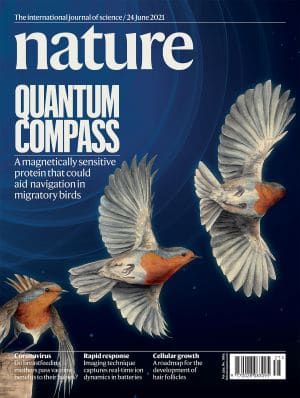The Chemistry of Bird Migration
Mathematics teacher Matthew Golesworthy has completed his Oxford University doctorate in chemistry on the fascinating topic of the physical origins of animals’ ability to sense the Earth’s magnetic field. His research on the quantum compass of bird migration has been published in Nature. Matthew gives us an insight into his fascinating work and findings below.
Animals have a remarkable ability to navigate long distances with incredible accuracy. Potentially most famous among these animals is birds, some of which migrate thousands of kilometres to nest on the very same branch year on year. To do this, birds use a large number of navigational tools: solar and stellar compasses, olfaction, and the Earth’s magnetic field. This latter sense is particularly incredible given that the Earth’s magnetic field is incredibly weak – approximately 200 times smaller than that of a standard bar magnet. There are two main hypotheses as to the mechanism of this sense: 1) magnetically sensitive iron particles in the beak that can move, similar to a compass needle; and 2) a protein found in the retina that can undergo a magnetically sensitive quantum mechanical process. As surprising as it may seem, a large body of evidence from behavioural and physical studies points further towards this latter mechanism.
In my doctoral research, the focus was on three birds: European robins, which are well-known migrators; pigeons, which are known to use the magnetic field for some orientation; and chickens, which are non-migratory and non-magnetosensing. Despite these differences, the protein suspected for magnetosensing – cryptochrome 4, found in the eyes of birds – is remarkably similar for all three, with minor adjustments as a result of evolution as to this protein’s function. In order to measure the tiny changes in concentrations of the relevant chemical species that allow for the sensing, along with the even tinier changes as a result of a magnetic field, I rebuilt and recoded a new piece of equipment that measures these changes using two lasers and some clever physics principles to amplify the signal. I then measured the effects of a magnetic field on the proteins, allowing us – a very large team at Oxford University and The University of Oldenburg, all working on a variety of techniques – to better understand the differences between these species.
To summarise the most important results, there was a marked difference in magnetic sensitivity from the protein found in European robins when compared to that from pigeons and chickens; in particular, the sensitive chemical species lasted for more than ten times as long in cryptochrome 4 from robins. These results, supported by other techniques, further enhances our understanding and strengthens the hypothesis that birds use a quantum mechanical technique to sense the Earth’s magnetic field.
The implications of such results pave the way for further understanding of biological sensory mechanisms, while also having the possibility to further improve the development of chemical compasses, which could play an important role in self-navigation technologies.
The main results from the research were published in the journal Nature and below is a video showing some aspects of the research.
Matthew Golesworthy
